Abstract
Runoff from a cow-calf pasture in eastern Nebraska was monitored for total coliforms (TC), fecal coliforms (FC), and fecal streptococci (FS) during 1976, 1977, and 1978. Bacteriological counts in runoff from both grazed and ungrazed areas generally exceeded recommended water quality standards. The FC group was the best indicator group of the impact of grazing. Rainfall runoff from the grazed area contained 5 to 10 times more FC than runoff from the fenced, ungrazed area. There was little difference in TC counts between the two areas, but FS counts were higher in runoff from the ungrazed area and reflected the contributions from wildlife. Recommended bacteriological water quality standards, developed for point source inputs, may be inappropriate for characterizing nonpoint source pollution from pasture runoff. The FC/FS ratio in pasture runoff was useful in identifying the relative contributions of cattle and wildlife. Ratios below 0.05 were indicative of wildlife sources and ratios above 0.1 were characteristic of grazing cattle. Occasions when the FC/FS ratio of diluted cattle waste exceeded one resulted from differential aftergrowth and die-off between FC and FS. The FC/FS ratio and percentage of Streptococcus bovis in pasture runoff are useful indicators for evaluating the effectiveness of livestock management practices for minimizing bacterial contamination of surface water. The importance of choice of medium for the enumeration of FS in runoff derived from cattle wastes is discussed.
Full text
PDF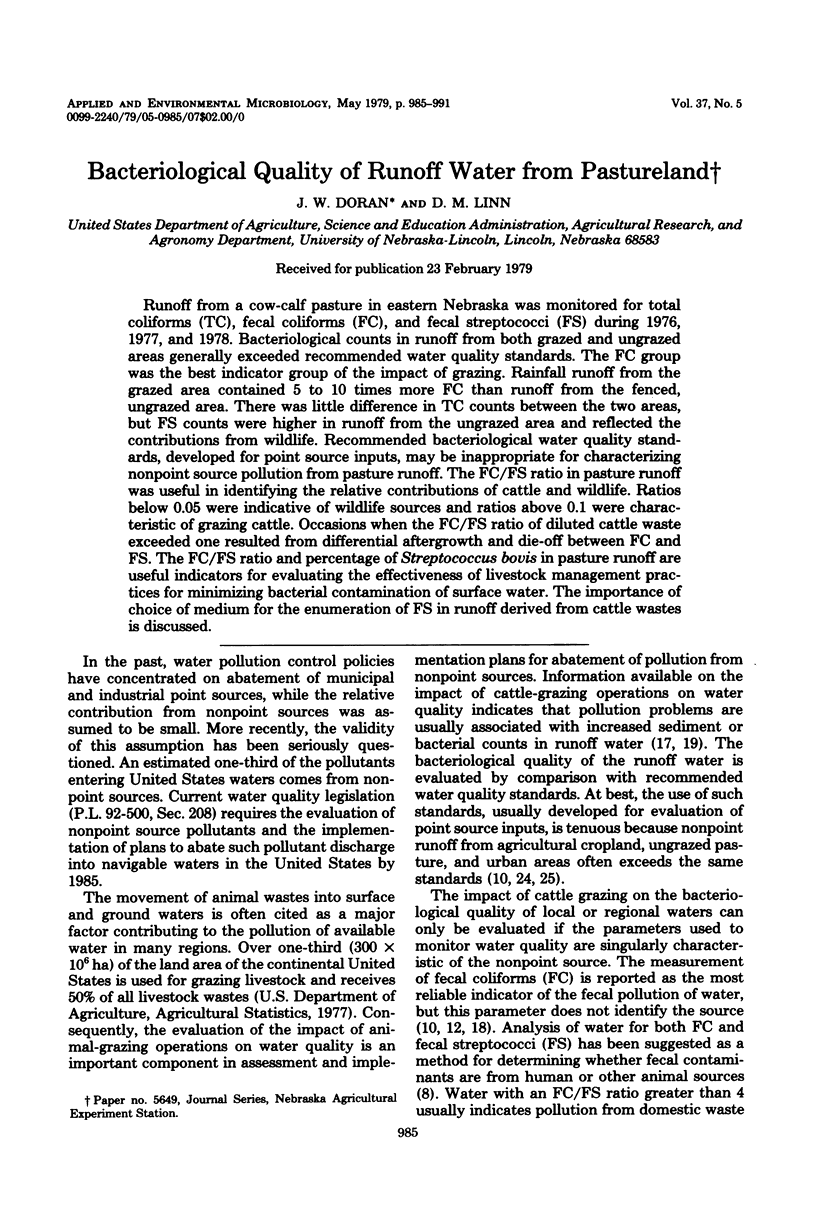
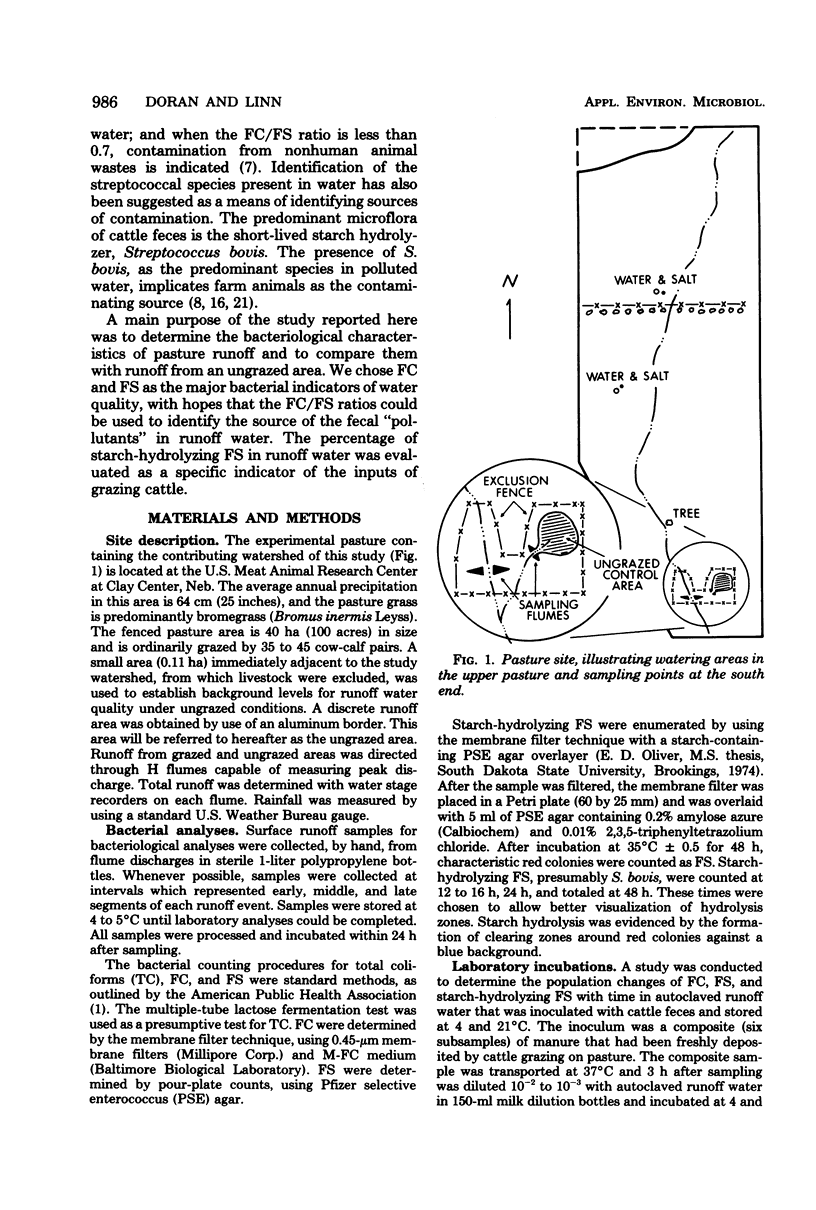
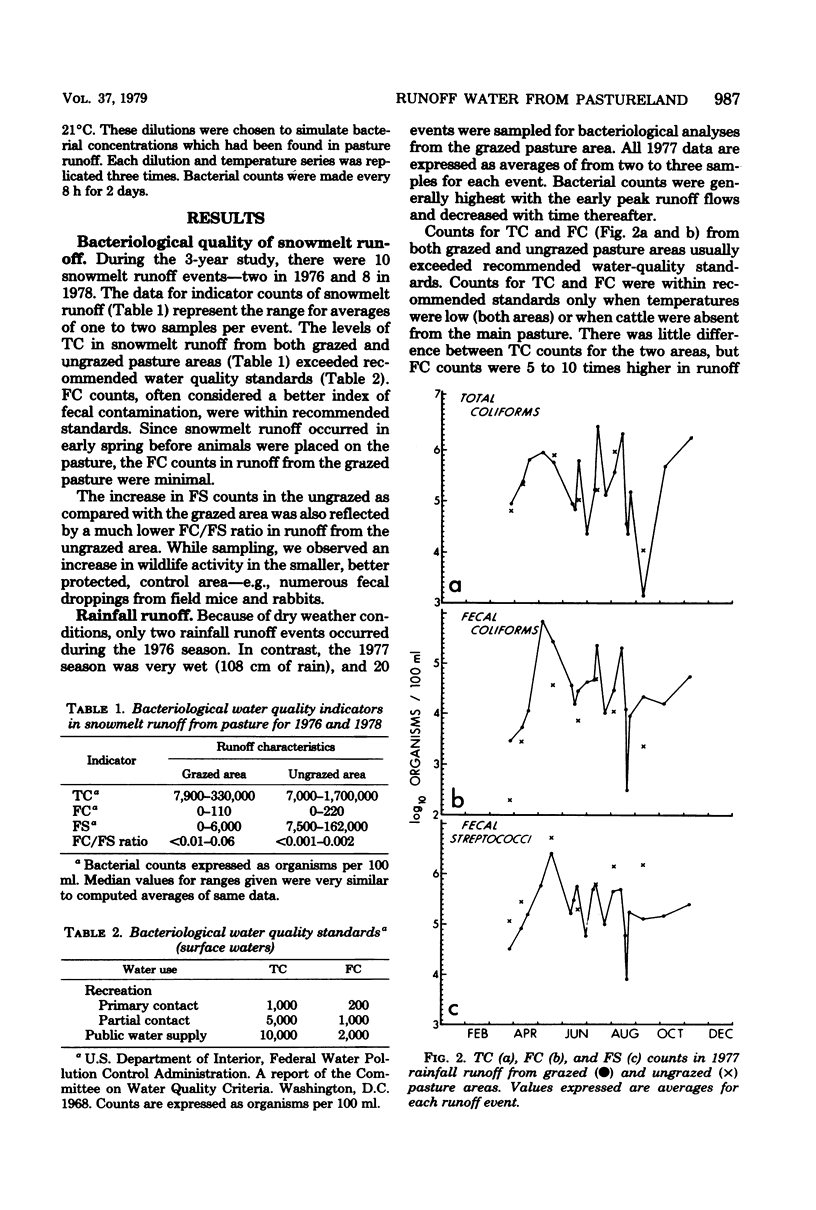
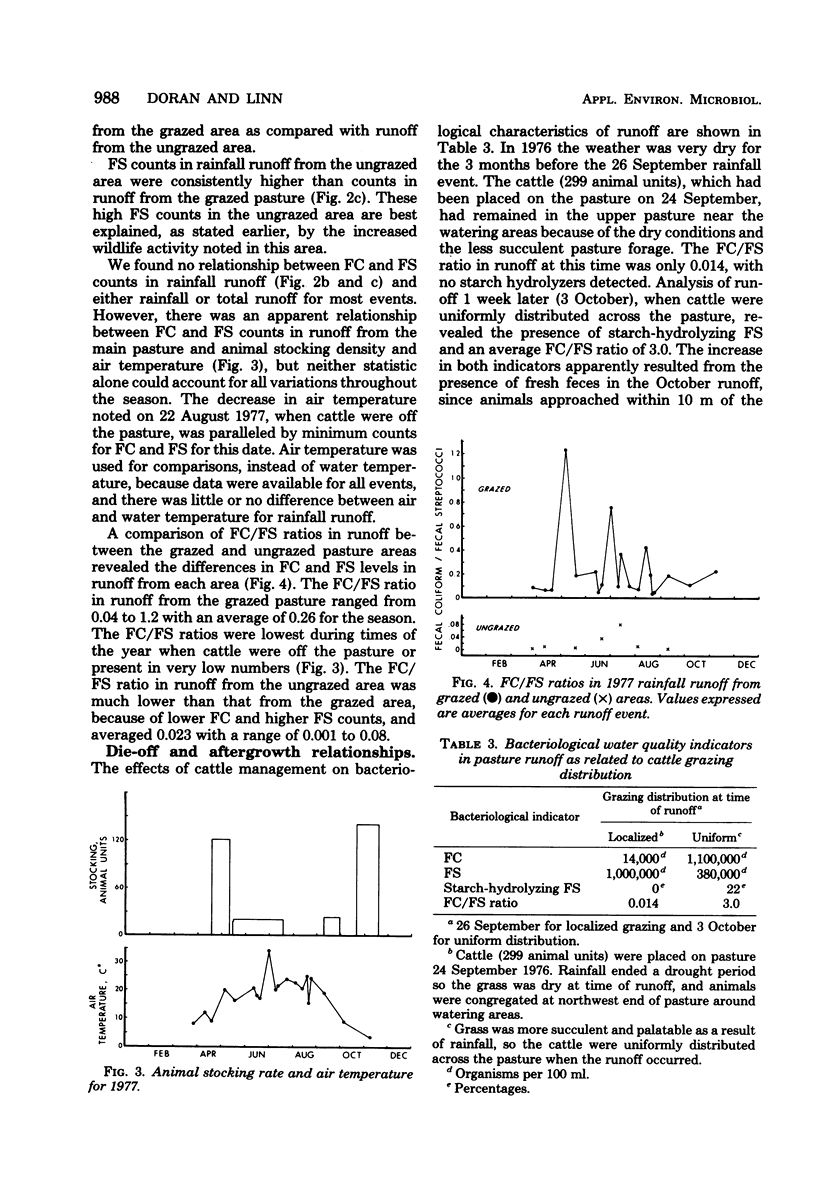
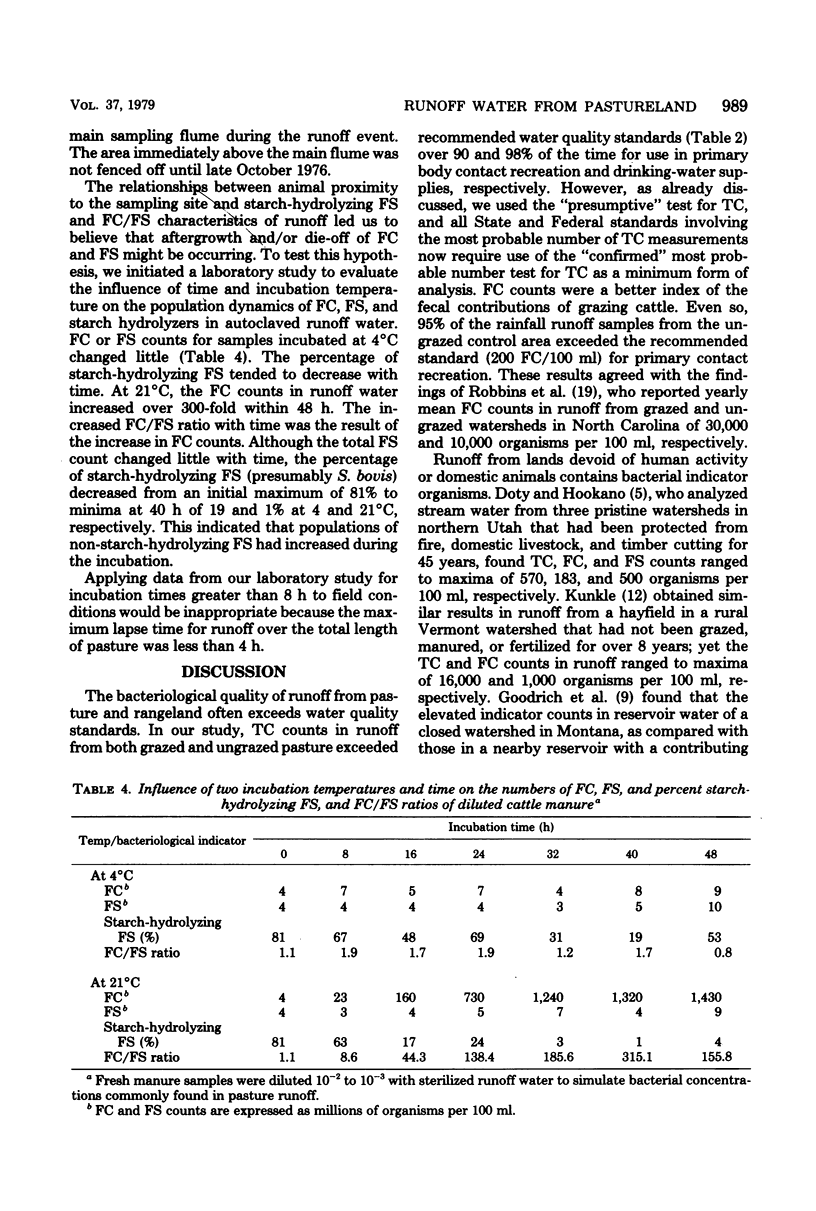
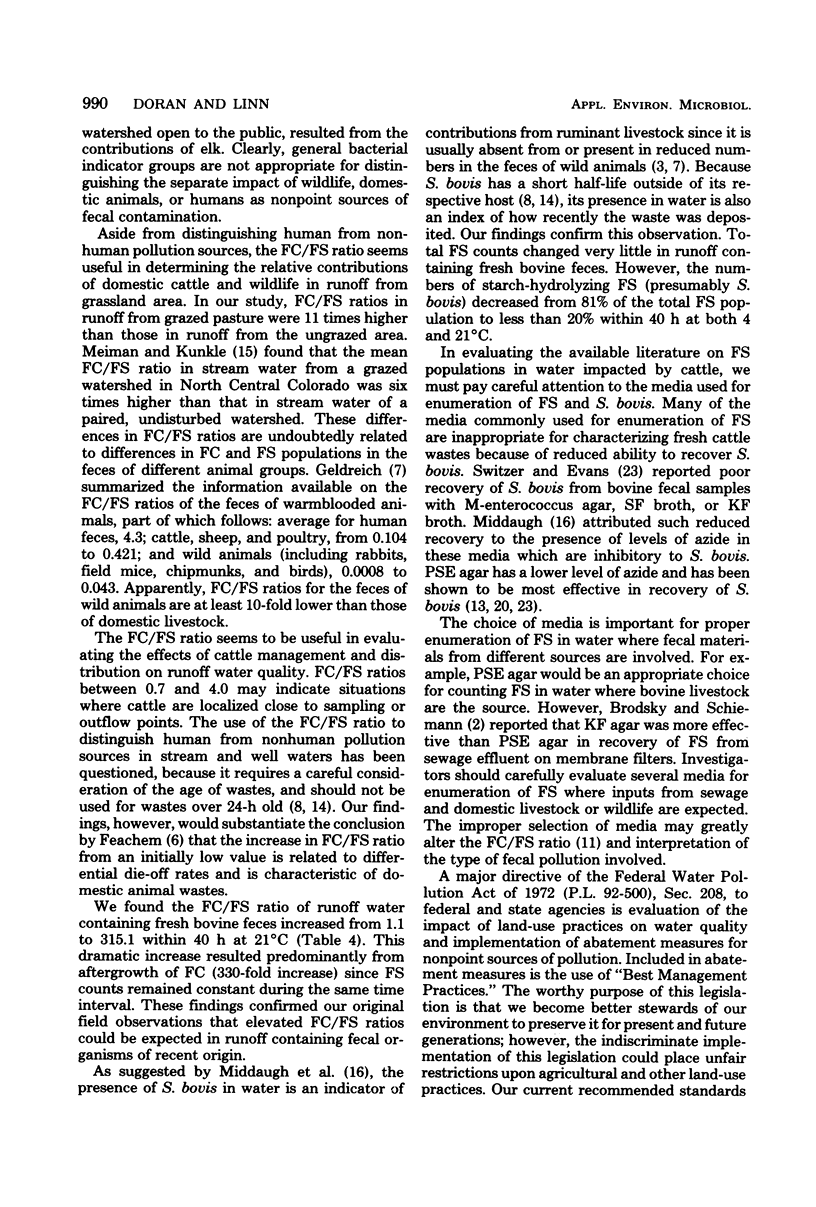
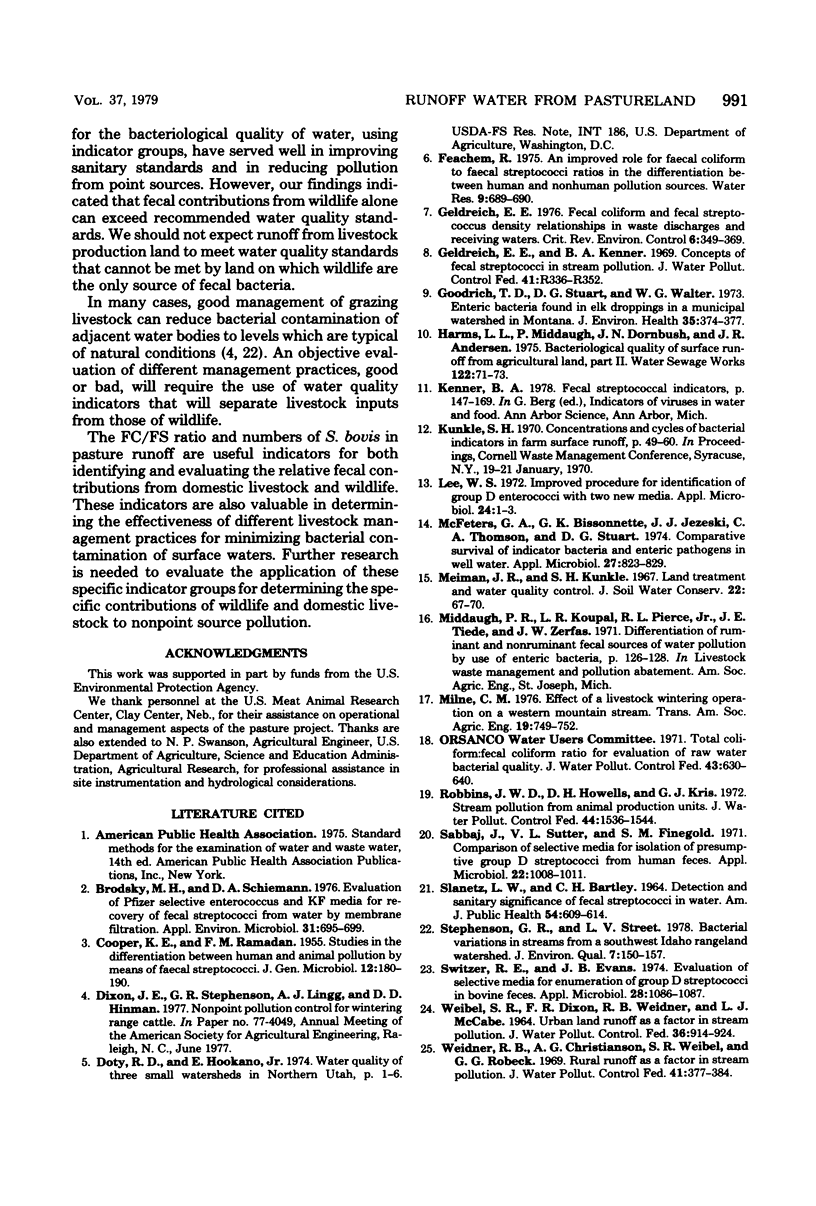
Selected References
These references are in PubMed. This may not be the complete list of references from this article.
- Brodsky M. H., Schiemann D. A. Evaluation of Pfizer selective enterococcus and KF media for recovery of fecal streptococci from water by membrane filtration. Appl Environ Microbiol. 1976 May;31(5):695–699. doi: 10.1128/aem.31.5.695-699.1976. [DOI] [PMC free article] [PubMed] [Google Scholar]
- COOPER K. E., RAMADAN F. M. Studies in the differentiation between human and animal pollution by means of faecal streptococci. J Gen Microbiol. 1955 Apr;12(2):180–190. doi: 10.1099/00221287-12-2-180. [DOI] [PubMed] [Google Scholar]
- Geldreich E. E., Kenner B. A. Concepts of fecal streptococci in stream pollution. J Water Pollut Control Fed. 1969 Aug;41(8 Suppl):R336+–R336+. [PubMed] [Google Scholar]
- Lee W. S. Improved procedure for identification of group D enterococci with two new media. Appl Microbiol. 1972 Jul;24(1):1–3. doi: 10.1128/am.24.1.1-3.1972. [DOI] [PMC free article] [PubMed] [Google Scholar]
- McFeters G. A., Bissonnette G. K., Jezeski J. J., Thomson C. A., Stuart D. G. Comparative survival of indicator bacteria and enteric pathogens in well water. Appl Microbiol. 1974 May;27(5):823–829. doi: 10.1128/am.27.5.823-829.1974. [DOI] [PMC free article] [PubMed] [Google Scholar]
- Robbins J. W., Howells D. H., Kriz G. J. Stream pollution from animal production units. J Water Pollut Control Fed. 1972 Aug;44(8):1536–1544. [PubMed] [Google Scholar]
- SLANETZ L. W., BARTLEY C. H. DETECTION AND SANITARY SIGNIFICANCE OF FECAL STREPTOCOCCI IN WATER. Am J Public Health Nations Health. 1964 Apr;54:609–614. doi: 10.2105/ajph.54.4.609. [DOI] [PMC free article] [PubMed] [Google Scholar]
- Sabbaj J., Sutter V. L., Finegold S. M. Comparison of selective media for isolation of presumptive group D streptococci from human feces. Appl Microbiol. 1971 Dec;22(6):1008–1011. doi: 10.1128/am.22.6.1008-1011.1971. [DOI] [PMC free article] [PubMed] [Google Scholar]
- Switzer R. E., Evans J. B. Evaluation of selective media for enumeration of group D streptococci in bovine feces. Appl Microbiol. 1974 Dec;28(6):1086–1087. doi: 10.1128/am.28.6.1086-1087.1974. [DOI] [PMC free article] [PubMed] [Google Scholar]
- Weidner R. B., Christianson A. G., Weibel S. R., Robeck G. G. Rural runoff as a factor in stream pollution. J Water Pollut Control Fed. 1969 Mar;41(3):377–384. [PubMed] [Google Scholar]


